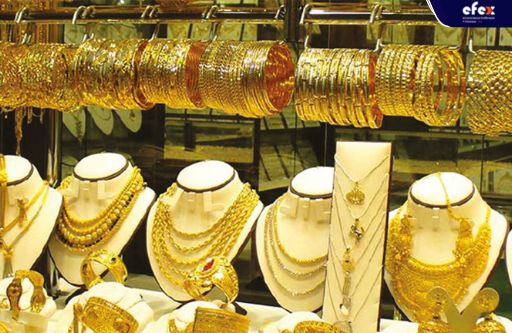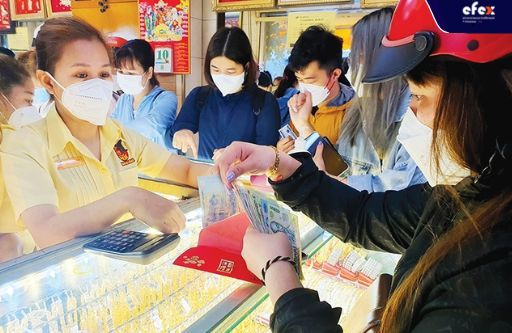
More Helpful Content
The development of Vietnam's economy in recent years also marks the changes in people's lives when the demand for gold and silver jewelry increases. They become popular, and anyone with the need and financial means can own them.
Attached to this demand of consumers, more and more companies are appearing to manufacture and supply jewelry products made of gold, silver, or alloys of gold - a rare metal. With this type of jewelry, people can change the design, style, or price and combine materials to produce different products, creating diversity, richness, and continuous development of the market.

What about the future of the Vietnam Jewelry Market? Let's find out the answer in this article below.

In the past 15 years, the gold market has witnessed the strong development of the 'big guys' in the industry such as Bao Tin Minh Chau, Doji Gold and Silver Group, SJC, etc. In recent years, Vietnam's gold and silver jewelry market has made much progress by winning a number of major awards in the design and manufacture of jewelry models. In 2003, there were more than 7000 gold trading enterprises, large and small, in the whole country, mostly in Ho Chi Minh City.
As of 2017, Vietnam ranked 14th in the world in terms of gold consumption. The jewelry industry was struggling because of COVID-19 for the last 2 years. According to the provided data, in 2020, Vietnam's jewelry consumption will reach 7.9 tons, down 41.45% over the same period last year. The decrease in the Vietnamese market is equivalent to the decrease of the whole world but relatively positive compared to some countries in the region such as Indonesia, Singapore, and Thailand.
Output of consumption: 5 tons/year After Liberation Day, the gold market was officially halted. Business operations and manipulation were kept under wraps and limited to a small area.
Output of consumption: 10 tons/year Decree 33/ND-CP, along with the establishment of state-owned Gold & Jewellery companies from the central to local levels (VietGold, SJC, PNJ, etc.) allowed large-scale imports of gold bars and gold raw materials for production and trading. Private companies remained small.
Output of consumption: 15 tons/year With the establishment of the DOJI Group, Decree 174/ND-CP encouraged the private sector of gold and jewelry to develop business products in a traditional manner, attracting many foreign companies to invest in manufacturing facilities in Vietnam (Design International, Pranda, Tomei...). DOJI, PNJ, and other jewelry stores have opened across the country. Consumption was increased, and quality and gold content were ensured.
Decree 24 / N-CP has stabilized the gold market and made it easier for large corporations like SJC, DOJI, and PNJ to expand their production facilities and business networks on a national scale.
People still have traditional psychology and gold hoarding preferences, despite the fact that the total population of nearly 100 million is in a golden population structure, with the middle class rapidly rising. However, instead of purchasing gold bars, people are now purchasing gold jewelry for three reasons. Investing in jewelry and storing it are three different things.

With 70 percent of the population, aged 15 to 64, 51 percent of whom are female, there will be plenty of shopping opportunities. According to World Gold Council calculations, the value of gold per capita in Vietnam in 2015 was USD$6.2, which is equivalent to 60% of Malaysia's consumption and 7% of Singapore's.
Furthermore, the consumption of gold jewelry in Vietnam is only 25% of total gold consumption, whereas the rate in other countries in the region is over 50% (except Thailand: 14%), indicating that there are plenty of opportunities for future growth. By 2025, it is expected that gold jewelry consumption will have increased to an average of 40 tons per year.
Vietnam is a precious market, but it also has limitations:
>> Learn more: Vietnam Cold Storage Market: A Depth Overview
The article on Vietnam Jewelry Market above has shown that Vietnam is a great opportunity and a potential market for the jewelry business. In fact, Vietnamese enterprises have been put under pressure by the presence of well-known international high-end jewelry brands. Vietnamese enterprises are entirely outclassed by foreign brands in retail centers such as Diamond, Parkson, and Zen Plaza.
Foreign jewelry brands, on the other hand, exclusively target the high-end category, with shopping malls as their primary distribution route, whereas most Vietnamese enterprises only have tiny local retail stores. They are unable to establish a presence in shopping centers because they are unbranded. Vietnamese businesses, on the other hand, are familiar with their local market, which means they will offer products that are more tailored to their client's preferences.


